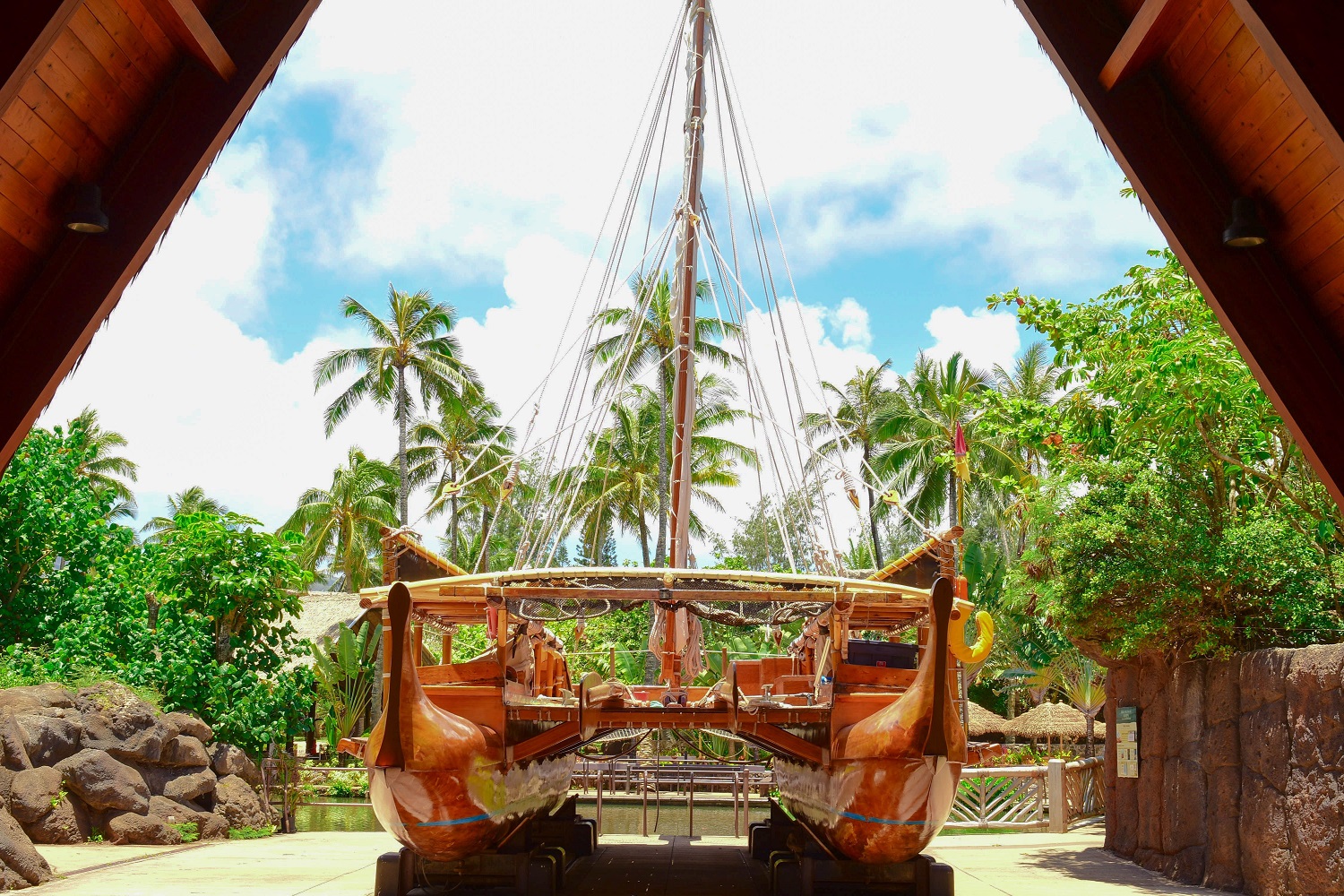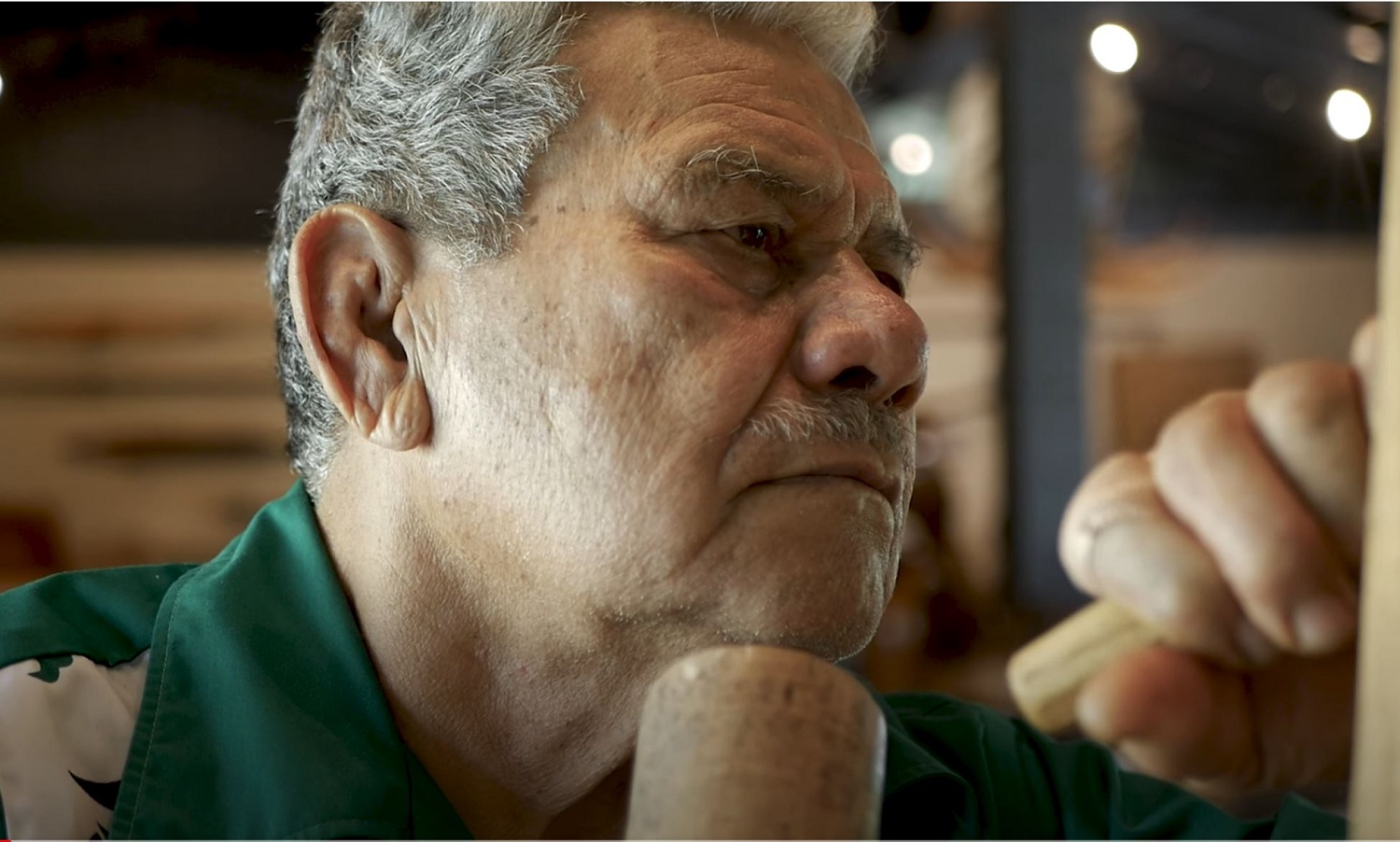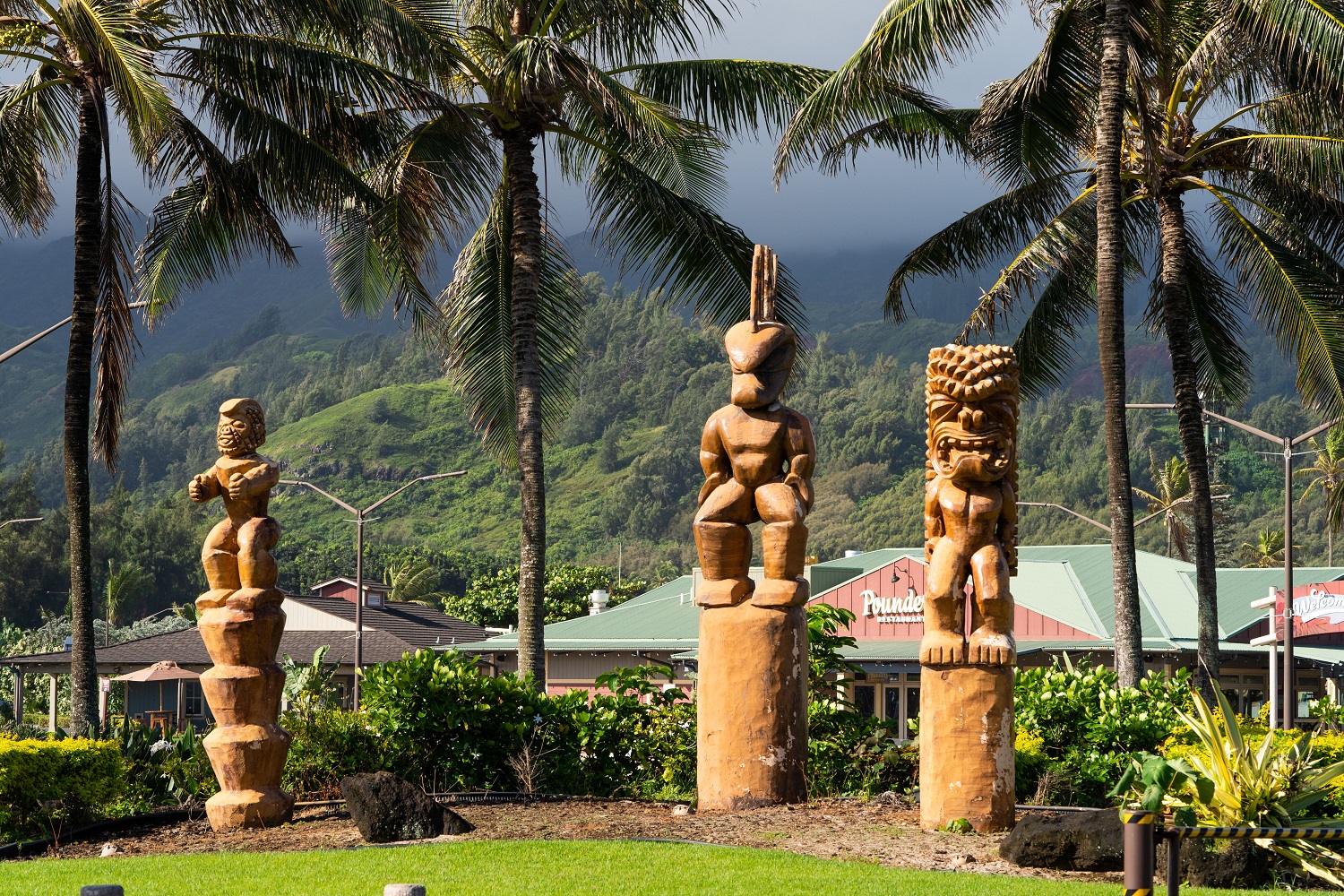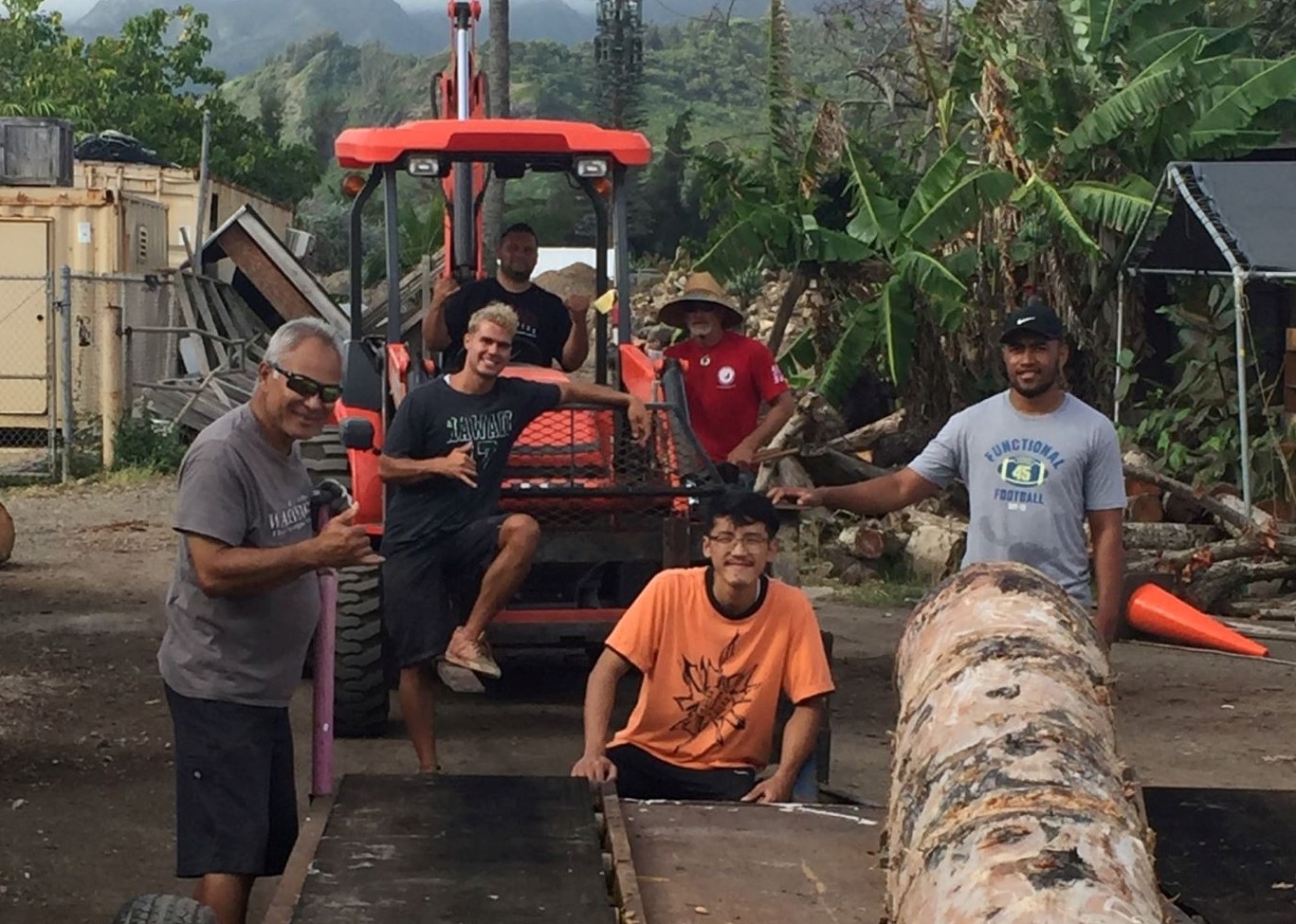We are pleased to present Fulfilling the Center’s Mission – Part II of our interview with Raymond Mokiao who shares some interesting insights regarding our remarkably talented Polynesian Cultural Center carvers.
Perpetuating the arts and crafts of Polynesia
Raymond spent some time explaining how the Carver’s Department addresses their charge of fulfilling the Center’s mission.
“Part of our mission as carvers is to attend to any artwork or cultural object in the Center”, he began. “The carvers are the main core for creating the displays or features that are in the Islands Villages. Of course, we bought many things directly from the Polynesian islands we represent, but over time, we have been able to recreate them here, thus making these items a lot more economically – and while building our skill sets, the Polynesian Cultural Center is perpetuating the arts and crafts of Polynesia thru teaching the art of carving to our students. To have all of that as a core value to the Center is a jewel to us.”

Raymond Mokiao holds an o’o (traditional tools used for digging and planting), one of many made by the Carvers for both ceremonial and practical purposes.
“The resource for getting quality and correct cultural objects is here, in La’ie. It is good for all of us that we are skilled in making authentic items of high quality.”

“The mighty Iosepa”, probably one of the finest examples of skills and ingenuity on the PCC’s campus, was designed and carved by talented carvers and headed by Tuione Pulotu and Kawika Eskaran.
The versatility of our Master Carvers
“Master carver Jared Pere, one of our full-time employees, is perhaps one of the most versatile and accomplished carvers at the Center, but we also tap into other master carvers like William Mahoni, Tuione Pulotu, and Kawika Eskaran, who were once student carvers themselves. You will soon realize that not only did these artists start learning their trade here, but that they also have their own achievement and accomplishments. So, when we have a project before us that we may not be experienced in, we go to these sources first. For example, Jared, Tuione, William, and Kawika were all involved in creating the large tikis you see around the Center. Each are a wonderful resource for us.”

Jared Pere (left) and William Mahoni (right) provides exceptional experience and talent to the Center.
“William has many of his art pieces at Martin & MacArthur Art Galleries across Hawaiʻi. Kawika has a lot of commissioned work in the Royal Hawaiʻian Shopping Center in Waikiki. Jared has worked in a lot of different media. For example, he worked for a company that made props for movies. He also made the Maui Fishhook sculpture found in front of Kualoa Ranch, also here on the island of Oahu.”

Tuione Pulotu has produced many beautiful carvings over the years.
“Tuione also has many pieces throughout the islands. He traveled to Tonga in January, and because of Covid-19 restrictions, has been unable to travel back to Hawaiʻi until they are lifted. He is keeping quite busy. He has built two large canoes and around 30 small canoes in these short months. In fact, some visitors to Tonga were so intrigued that they have now commissioned $60,000 worth of full-sized canoes, and models of the various styles of canoes throughout Polynesia.”

Kawika Eskaran’s carvings reflects his great respect for his Hawaiʻian culture.
Pushing our student carvers to excel
“So, we have a good base of experience which, of course, pushes our students’ skills higher, including both two-dimensional art such as weapons, and flat surface pieces, which has been our standard. Recently, Jared, who is the Manager of our department, has been encouraging them to move into three-dimensional art pieces, which moves us into the higher end market.”

Three-dimensional art allows the carver to bring in exacting details, which helps to tell a deeper story.
“We are working to expand into that area, helping the Center to increase revenue, but even more importantly, fulfilling our mission to preserve our culture.
We are truly blessed to have these skilled carvers, who have not only contributed to the beauty and authenticity throughout the Polynesian Cultural Center, but who have been gracious in sharing those skills with our young artists. Their success in fulfilling the Center’s Mission is deeply appreciated. Their humble generosity combined with their extraordinary ability is a tribute to the noble cultures of Polynesia.

These bigger than life tiki statues welcome guests from all over the world.
We look forward to bringing you our next installment, where we will introduce you to our student carvers and learn about their experiences at the Center and their plans for the future. Stay tuned!


Recent Comments